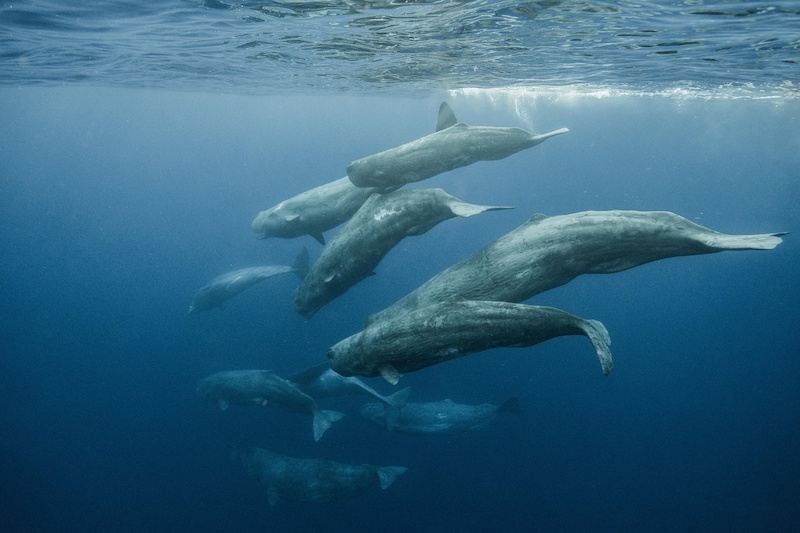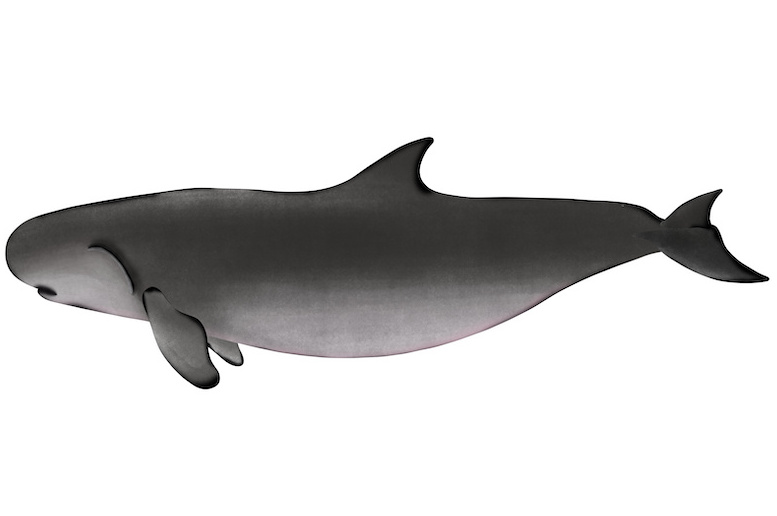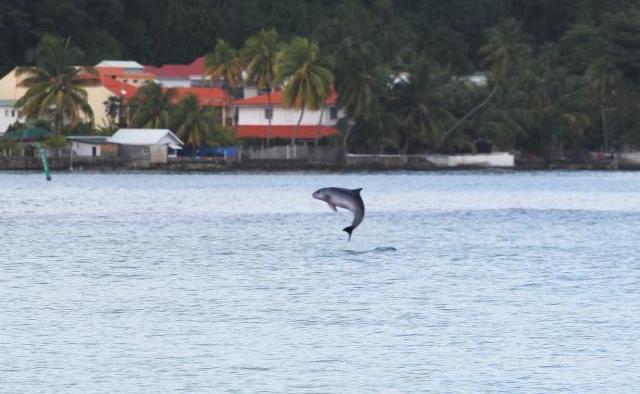
The dwarf sperm whale, an enigmatic creature of the seas, remains a subject of fascination and mystery. In this article, we delve into the world of this small giant of the depths, exploring its unique characteristics, natural habitat, reproductive habits, and diet. Discover the secrets of this lesser-known marine mammal and learn how it adapts and survives in the vastness of the oceans.
Characteristics of the Pygmy Sperm Whale
The dwarf sperm whale (Kogia sima), a member of the Kogiidae family, is a fascinating and often misunderstood marine mammal. As an adult, it reaches a length of 2.1 to 2.7 meters and weighs between 135 and 270 kg, making it one of the smallest members of the toothed whale family. Its longevity remains a mystery, adding to its enigmatic nature. Morphologically, the Pygmy Sperm Whale is characterized by a relatively small head with a short, square-shaped snout, and a distinctly offset blowhole to the left. Its compact appearance is complemented by a sharp and falcate dorsal fin, as well as short and pointed pectoral fins, resembling the appearance of a shark.
Its coloration ranges from dark blue-gray to bluish-gray, with a lighter ventral side, allowing it to effectively camouflage in the marine depths. Despite its small size, the Pygmy Sperm Whale is an exceptional diver, capable of descending up to 900 meters to feed. This remarkable ability attests to its evolutionary adaptation to the demanding conditions of life in the open sea. Furthermore, its discreet behavior and the ability to release a syrupy liquid in case of danger highlight its uniqueness among cetaceans. The Pygmy Sperm Whale, although solitary or moving in small groups, plays an important role in the marine ecosystem, contributing to biological diversity and maintaining the natural balance of the oceans.

Habitat of the Dwarf Sperm Whale
The Dwarf Sperm Whale (Kogia sima) primarily inhabits the temperate to tropical waters of the world’s oceans. This species is distinguished by its preference for deep areas, often at the edge of the continental shelf and beyond, in regions where the waters are deep enough to allow its characteristic dives. Capable of diving up to 900 meters, the Pygmy Sperm Whale is adapted to a life in the open sea, where it can explore and exploit resources in abyssal zones.
Despite its ability to live in extreme depths, it is sometimes observed near the surface, especially in calm waters. Its presence in these varied habitats, ranging from shallow coastal waters to deep-sea abysses, attests to its incredible adaptability and ability to navigate in different marine environments. This adaptability plays a crucial role in its survival, allowing it to find suitable areas for feeding and reproduction.
Reproduction in the Dwarf Sperm Whale
Reproduction in the Dwarf Sperm Whale (Kogia sima) is a key aspect of its life cycle, although many details still remain mysterious. These cetaceans reach sexual maturity between 3 and 5 years, a relatively early age compared to other cetacean species. The gestation period is estimated to be between 9 and 12 months, after which the female gives birth to a single calf.
The weaning process of the young dwarf sperm whale is relatively rapid, taking place between 6 months and a year. This relatively short period of dependency is crucial for the young whale’s development, during which it learns essential skills for survival in the ocean. Pygmy sperm whales tend to be solitary creatures or move in small groups, suggesting that social interactions during the breeding and nurturing period might be limited. Nevertheless, these interactions, though discreet, play a vital role in the species’ perpetuation and the preservation of its population dynamics in the oceans.

Diet of Kogia sima
The diet of the Dwarf Sperm Whale (Kogia sima) is primarily focused on cephalopods, reflecting its adaptation to life in the deep seas. These marine mammals are skilled hunters, diving up to 900 meters to track and capture a variety of squids and other cephalopods that make up the majority of their diet. This preference for cephalopods is complemented by the occasional consumption of fish and other marine invertebrates, providing some diversity to their diet.
The Dwarf Sperm Whale uses its sophisticated sonar to locate its prey in the darkness of the ocean depths, a crucial skill for navigating and hunting in an environment where light is scarce. This dietary specialization not only highlights the adaptability of the Dwarf Sperm Whale to its habitat but also underscores its significant role in the marine ecosystem as a predator of deep-sea creatures, thus contributing to the ecological balance of the oceans.
Discover all cetacean species that can be found near the coasts of Martinique: